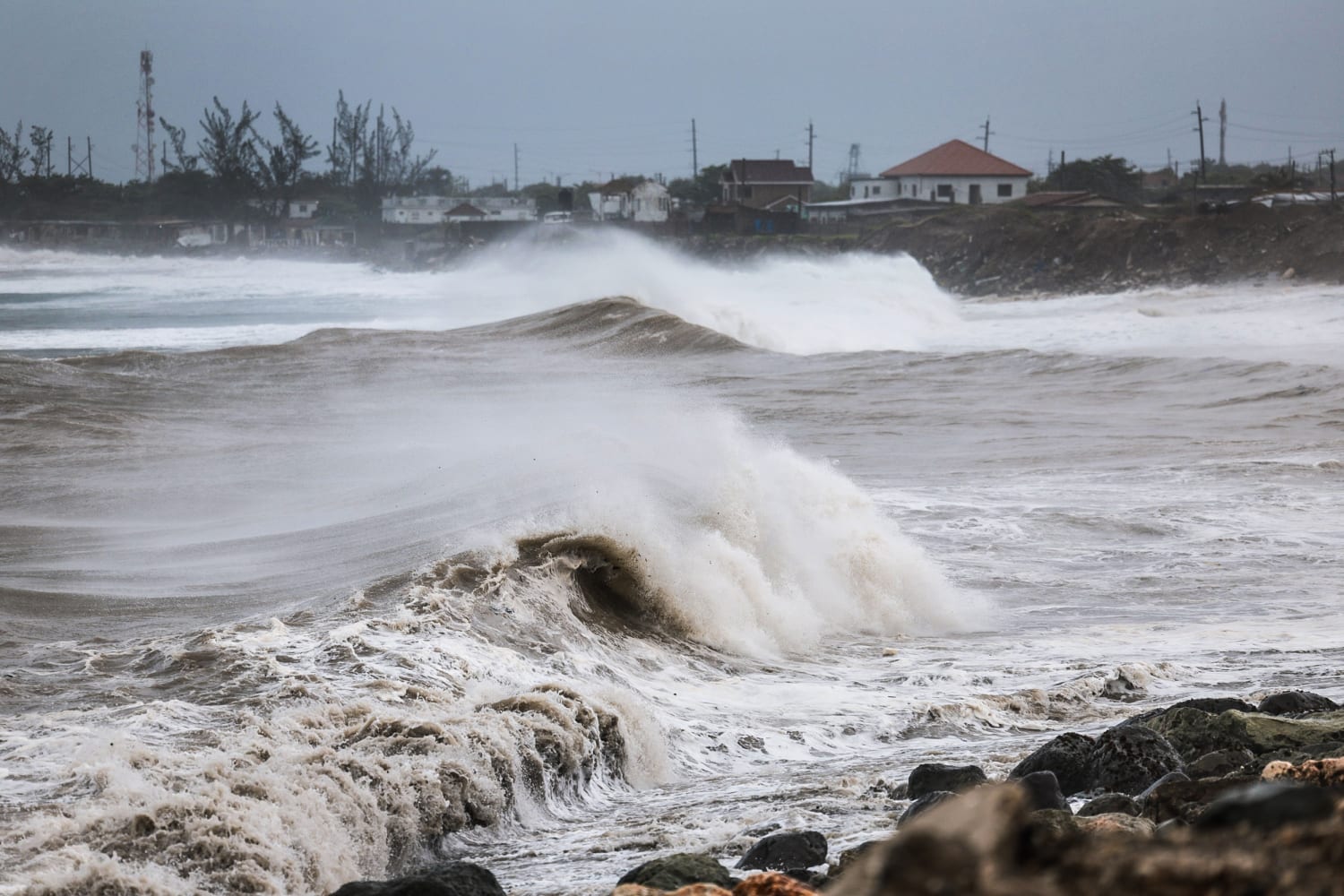Beryl has been downgraded to a tropical storm after making landfall on Mexico’s Yucatan Peninsula as a powerful Category 2 hurricane early Friday morning. However, the storm could strengthen again as it approaches Texas, according to the National Hurricane Center.
The Yucatán Civil Protection Department confirmed that the storm made landfall north of Tulum at 7:05 a.m. ET with sustained winds of 108 mph and gusts of 136 mph. Forecasters warned that the storm damaging winds, storm surges of up to one meter high and life-threatening surf and rip currents in the area.
Beryl weakened Friday afternoon as it passed over the northern Yucatan Peninsula. The storm is expected to continue weakening as it continues to cross the peninsula, but Beryl could “regain hurricane status” on Sunday as its center moves back over the Gulf of Mexico, the National Hurricane Center said.
The center of the storm is expected to move across the southwest Gulf Coast on Friday evening and reach the western Gulf Coast on Sunday evening.
The storm remains to the north of its planned tracks, increasing the chance of a landfall in Texas.
A hurricane watch and a storm surge warning are in effect for the Texas coast from “the mouth of the Rio Grande northward to Sargent,” according to a Friday afternoon update from the National Hurricane Center. A hurricane warning has also been issued for northeastern Mexico from Barra el Mezquital to the mouth of the Rio Grande.
The hurricane has already been blamed for nine deaths in Venezuela, Jamaica and the Windward Islands of Grenada and St. Vincent and the Grenadines. The hurricane caused extensive damage to many homes in Grenada and St. Vincent and the Grenadines, officials there said.
At 3 a.m. ET, Beryl was 77 miles west of the Yucatan Peninsula, the Yucatan Department of Civil Protection said. At 5 p.m. ET, the hurricane was 35 miles east-southeast of Progreso, Mexico, on the northern coast of the Yucatán with maximum sustained winds of 65 mph with higher gusts, according to the National Hurricane Center. Beryl is moving westward with 24 km/h.
Photos shared by Quintana Roo Governor Mara Lezama showed downed power lines, trees and flooding in neighborhoods across the state. In a post on X, Lezama said businesses “especially in the areas most affected” after Beryl’s impact remain open.
Up to 10 inches of rain is expected, with some flash flooding possible across the peninsula. About 4 to 8 inches or more of rain is possible across parts of northeastern Mexico and southern Texas from Sunday through next week, the hurricane center said.
“There is an increasing risk of strong winds, storm surge and heavy rainfall across parts of northeastern Mexico and southern Texas this weekend,” the center said.
Mexican President Andrés Manuel López Obrador said the hurricane was likely to reach Tulum and urged people to move to higher ground or seek shelter elsewhere.
“Let us not hesitate, material things can be found again. The most important thing is life,” he said on X on Thursday night.
The city of Corpus Christi, Texas, distributed 10,000 sandbags to residents in preparation for Beryl.
Beryl’s formation and strength are record-breaking. Scientists say the process of rapid intensification is becoming more common as climate change increases sea surface temperatures.
It was the first Category 4 hurricane to form in June and the earliest Category 4 storm of the Atlantic hurricane season. Before Beryl, the earliest was Hurricane Dennis, which formed on July 8, 2005.
When Beryl strengthened this week to a Category 5 storm with sustained winds of up to 165 mph (265 km/h), it became the most powerful hurricane on record in July.
On Thursday the storm had weakened to a category 2, but later strengthened again to a category 3. Earlier on Friday the storm had weakened again to a category 2.
American tourists in Mexico stayed indoors, hoping the storm would not cause too much damage, while flights to and from the region were canceled.
Stae and Wallace Hall from Fort Worth, Texas, are staying at an all-inclusive resort in Cancun, 40 miles north of Tulum.
“The winds are picking up a little bit,” Stae Hall told NBC Dallas-Fort Worth on Thursday. “They’re starting to take down some of the light poles, they’re starting to take down some of the cabanas off the beaches.”
Anita Luis, a tourist from Dallas, Texas, told Reuters: “We’re worried about the hurricane and not just for ourselves but for all the people who are traveling. We just want to get home safely and pray for everyone else, but we’re just stuck here.”
Anyone staying at a resort looking for a stiff drink to calm their nerves as Beryl flies overhead will be disappointed: the Halls said their hotel has stopped serving alcohol at the behest of the Mexican government.
“I just have to realize that I have no control,” Stae Hall said. “Go into prayer mode. We’re going to go to the buffet, get some snacks, get some fruit, maybe play some games and just pretend like nothing is happening.”
